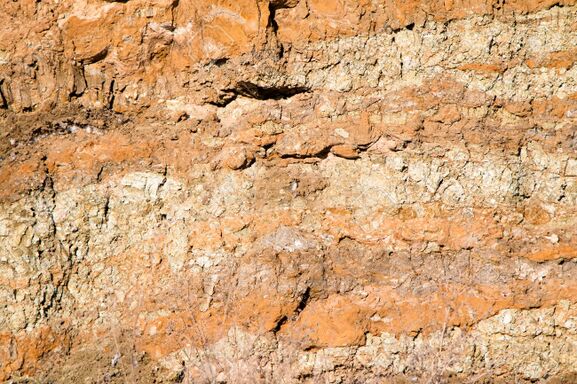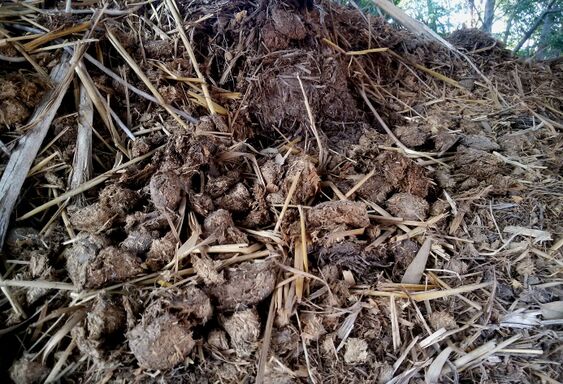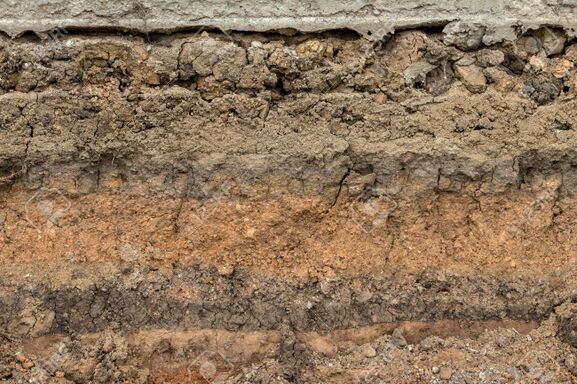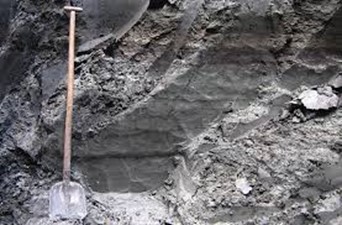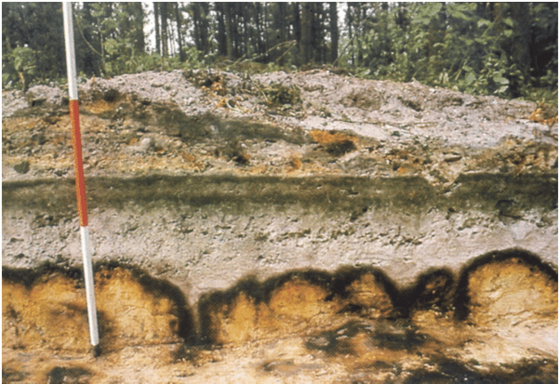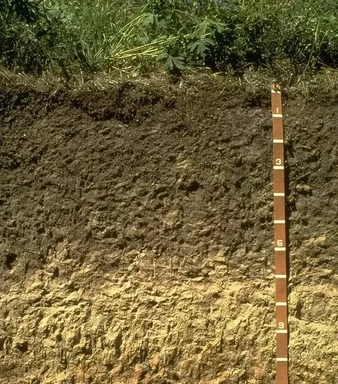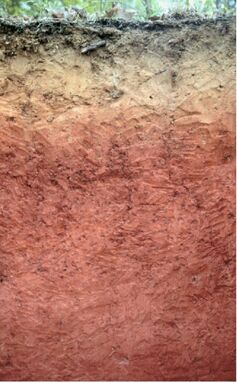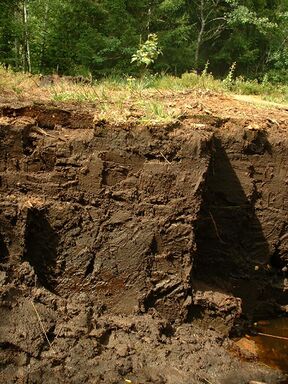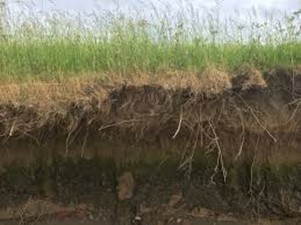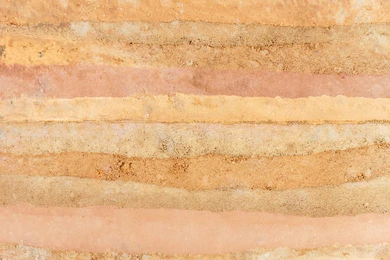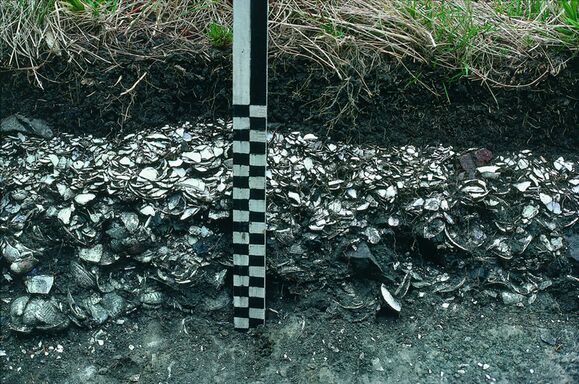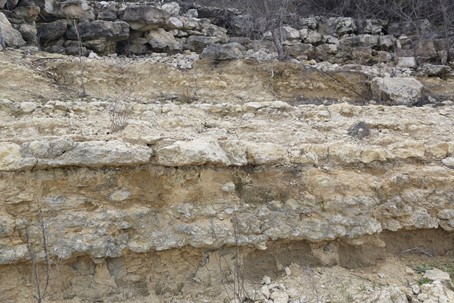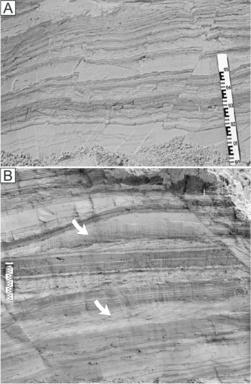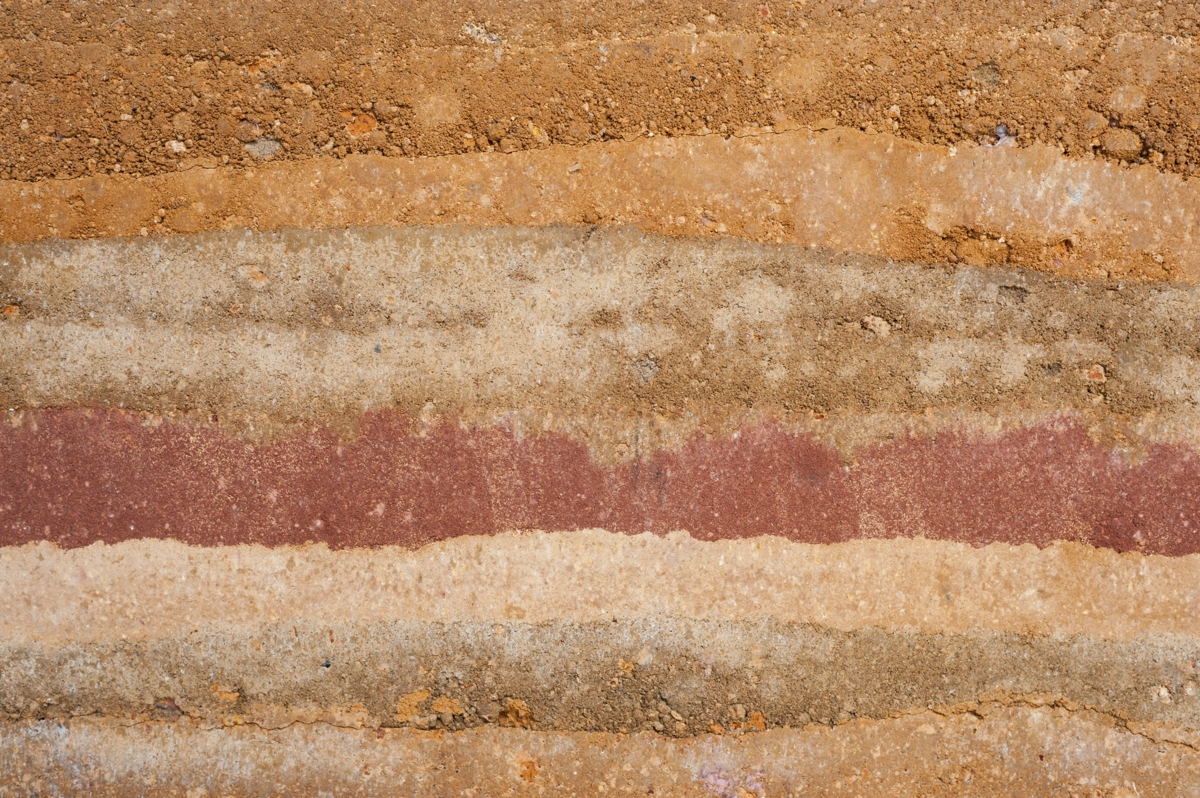Layering
A layer is an horizontal organization of material, especially one of several parallel layers arranged one on top of another. A bed or layer of sedimentary rock is visually distinguishable from adjacent beds or layers. Layers describe a large amount of rock which has one indistinguishable type. For example sandstone. This sandstone still can have clay lamina present within its layer. Further on this page some examples of layers can be found.
Layer Transitions
The layering within a cycle of soil/rocks can have different boundaries on its top and bottom. This layering transitions are defined as below.
| Class | Type | Description |
|---|---|---|
| L01 | Derivative | The transition is not based on a change in the sample, but on a change in behaviour of drilling. |
| L02 | Predetermined | The transition is not based on a perceived change, but artificially determined and coincides with the transition of a sampled interval or the transition of a described interval. |
| L03 | Derived probe | The transition is derived from a probe within a range of 5 m from the borehole. |
| L04 | Observed randomly | Observed size transition area in sample: >100mm. |
| L05 | Observed diffuse | Observed size transition area in sample: ≥30 mm - <100 mm. |
| L06 | Observed gradually | Observed size transition area in sample: ≥3 mm - <30 mm. |
| L07 | Observed sharp | Observed size transition area in sample: <3 mm. |
Layer thickness
Layer thickness is a factor that determines the thickness of the primary layers and is categorised in the following categories.
| Term | Thickness (mm) |
|---|---|
| Thin laminated | <6 |
| Thickly laminated | 6 - 20 |
| Layered very thin | 20 - 60 |
| Thin layered | 60 - 200 |
| Mm layered | 200 - 600 |
| Cm layered | 600 - 2000 |
| Dm layered | > 2000 |
Examples
Clay layers
For explanation see clay.
Detritus layers
For explanation see detritus.
Gravel layers
For explanation see gravel.
Gyttja layers
For explanation see gyttja.
Heterogeneous
Heterogeneous layers are many different sediments which are layered on top of each other. Most of the time there can be a sequence spotted within this layering.
Homogeneous
Homogeneous layers are layers on top of each other with the same sediments or material. The layers can differ in deposition environment.
Loam layers
For explanation see loam.
Peat layers
For explanation see peat.
Root penetration
Root penetration is present at a place where there is much coverage by plants above the ground level moreover root penetration is the base for organic layers.
Sand layers
For explanation see sand.
Shell layers
Steeply inclined layers
Inclined layers exist due to the pressure of continental plates or due to the movement of soil/rock in which the layers are tilted. After these processes the new sediments are deposited with another orientation than the ones underneath.
Stone layers
For explanation see pebbles.
Twisted sand layers
Sand is a sediment which is very mobile. This results in the fact that sand layers can be formed by less pressure and easily deformed.
References
- NEN-EN-ISO 14688-1:2019

